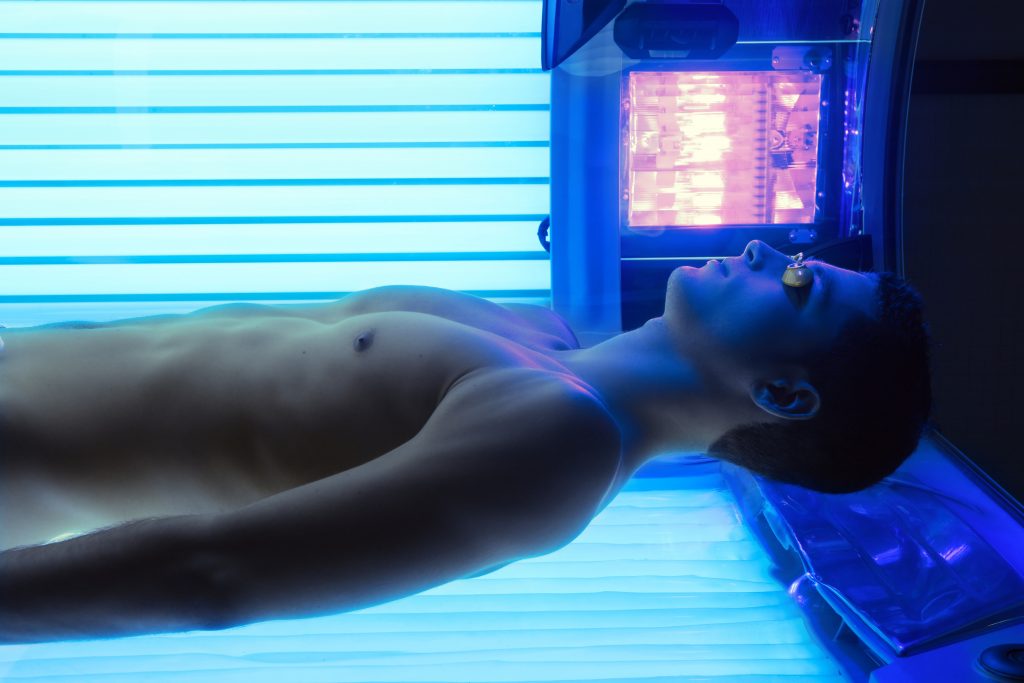By Charalampos Karouzos,
Artificial tanning procedures are commonly advertised as an innovative and less time-consuming way of getting that desired sun-kissed glow, while hindering great health risks. Firstly, tanning beds are well-known tanning methods that work by emitting UVA and UVB rays, replicating the sun’s natural radiation. In fact, they deliver intensified doses of UV radiation in a condensed time-frame, drastically reducing the time needed for getting a tan but at the same time heightening the risk of skin cancer, including melanoma, and accelerating skin aging.
Sunless tanning creams, also known as self-tanners or bronzers, on the other hand, offer a safer avenue for attaining a tan sans excessive UV exposure. These products contain dihydroxyacetone (DHA), a colorless sugar that, upon reacting with amino acids in the skin’s outer layer, produces a temporary pigment change. Such sunless tanners bring a natural-looking tan, devoid of the risks associated with UV exposure, rendering them an ideal choice for those yearning for radiant skin. The downside is that they are not long-lasting; they easily come off when the skin’s outer cells are naturally shed.
While for some the allure of a tan is undeniable, prioritizing your skin’s health remains paramount. Thus, it becomes crucial to aim accurately and strike the perfect balance between getting a bronze glow, while also remaining safe when exposed in the sun. And now, the moment everyone has been eagerly anticipating has arrived; some tips and tricks to get that tan while remaining on the safe side!

Gradual Exposure: Start with short periods of sun exposure and gradually increase the time spent in the sun over several days. Remember to avoid the peak sunshine hours at first, meaning 10am to 4pm, in order to allow your skin to adapt and develop a tan more effectively without risking sunburn.
Use of Sunscreen: While it may seem counterproductive, applying sunscreen with an appropriate SPF can help stimulate melanin production and promote a faster tan. In any case, it’s crucial to use sunscreen and avoid prolonged sun exposure to prevent sunburn and skin damage.
Moisturizing and Hydration: Keep your skin well-hydrated by moisturizing regularly with a hydrating lotion, cream or natural oils and at the same time keep your body hydrated to tan more evenly and retain the tan for longer, avoiding dehydrated skin that might peel.
Avoid Tanning Beds: Steer clear of artificial tanning devices, which elevate the risk of skin cancer and premature aging. Embrace your natural skin tone or opt for safer alternatives like sunless tanning creams.
Check Your Skin: Conduct regular skin examinations to monitor changes in moles or lesions and consult a dermatologist if you detect anything suspicious. Early detection of skin cancer can lead to more effective treatment and improved outcome.
In the pursuit of the perfect sun-kissed glow, it’s essential to tread carefully, balancing the desire for bronzed skin with the imperative of skin health. Understanding the intricate relationship between sunlight, skin, and protection is essential, not only for healthy skin, that remains the top priority, but also for getting the desired tan. Whether you embrace the natural warmth of the sun’s rays or opt for safer alternatives, keep in mind that by gradual exposure, responsible sunscreen use, diligent moisturizing and avoiding tanning beds, you can bask in the glow of radiant skin while minimizing the associated risks.
References
- Considering Cosmetic Procedures? Know your Fitzpatrick Skin Type First. Enrich Clinic. Available here
- The Risks of Tanning. FDA. Available here
- What to Know About Tanning. WebMD. Available here
- Michael Garone Jr, John Howard, Jordan Fabrikant. “A Review of Common Tanning Methods”. Clinical Aesthetic. V 8 n(21).




